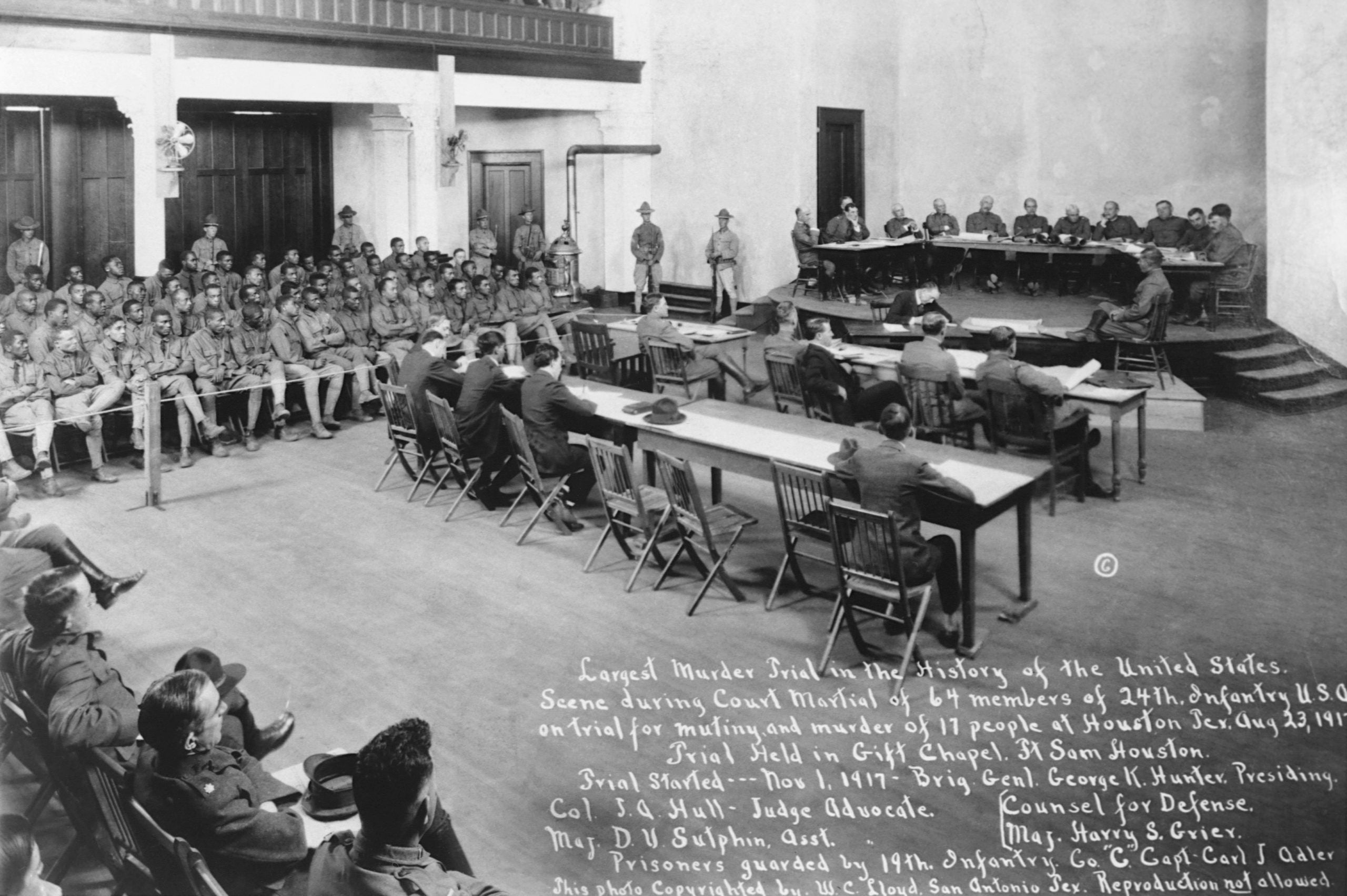
In San Antonio, TX at the Veterans Cemetery at Fort Sam Houston, there is a row of headstones for soldiers missing the name, rank, date of birth, and the wars in which they fought.
Who do these graves belong to? “Members of the 3rd Battalion, 24th Infantry Regiment, an all-Black unit known as the Buffalo Soldiers” who were hanged on December 11, 1917, in what is considered to be “the single largest mass execution of American soldiers by the Army.”
The executed Buffalo Soldiers are finally receiving their proper, newly engraved headstones more than a century later. This occurred after the U.S. Army acknowledged that racial discrimination played a part in their trials and “formally overturned their convictions and those of 97 other Black soldiers who were found guilty of crimes associated with the riot.”
The Buffalo Soldiers had been assigned to guard “white soldiers preparing for deployment to Europe,” as the Equal Justice Initiative (EJI) cites. But “from the beginning of their assignment at Camp Logan, the Black soldiers were harassed and abused by Houston police.”
When the soldiers armed themselves to confront the Houston police after a series of police abuses, a mob of armed white men challenged them, leading to 20 deaths. No white civilians were ever brought to trial, while 110 Black soldiers were tried and convicted. Nineteen of them were hanged.
In a statement, Secretary of the Army Christine Wormuth said, “After a thorough review, the Board has found that these Soldiers were wrongly treated because of their race and were not given fair trials…By setting aside their convictions and granting honorable discharges, the Army is acknowledging past mistakes and setting the record straight.”

Cpl. Jesse Moore, Angela Holder’s great-uncle, was one of these formerly dishonorably discharged Black soldiers. Holder’s Great-Aunt Lovie was the first person to tell her about Moore. “She had a photograph of him in her home. And I was a six-year-old kid running through the house, and on this particular day it caught my attention and I asked my aunt, ‘Who is that? Why do you have his picture?’ and all. I was told that that was her brother who had been killed by the Army,” reported CBS News.
“Ours don’t have a story; they just have name and date of death,” Holder stated. “The first time I came here I touched the headstone and I said, ‘Oh, man, this should not have happened to you, but I’m going to do something about that.’” For Holder, righting this wrong for her great-uncle will finally offer up “completion, some peace.”
Charles Anderson’s cousin, Sgt. William Nesbit, was among those hanged, and has also been fighting for dignity in his ancestor’s death.
Fortunately, “[t]his past Thursday at Fort Sam Houston National Cemetery, Angela Holder stood watch as proper headstones for her great uncle, and the other unjustly executed soldiers, were unveiled.”
Now “[w]e’ll have information on these headstones that reflect the service that they rendered to their country…just like the rest of the stones here,” said Anderson.







